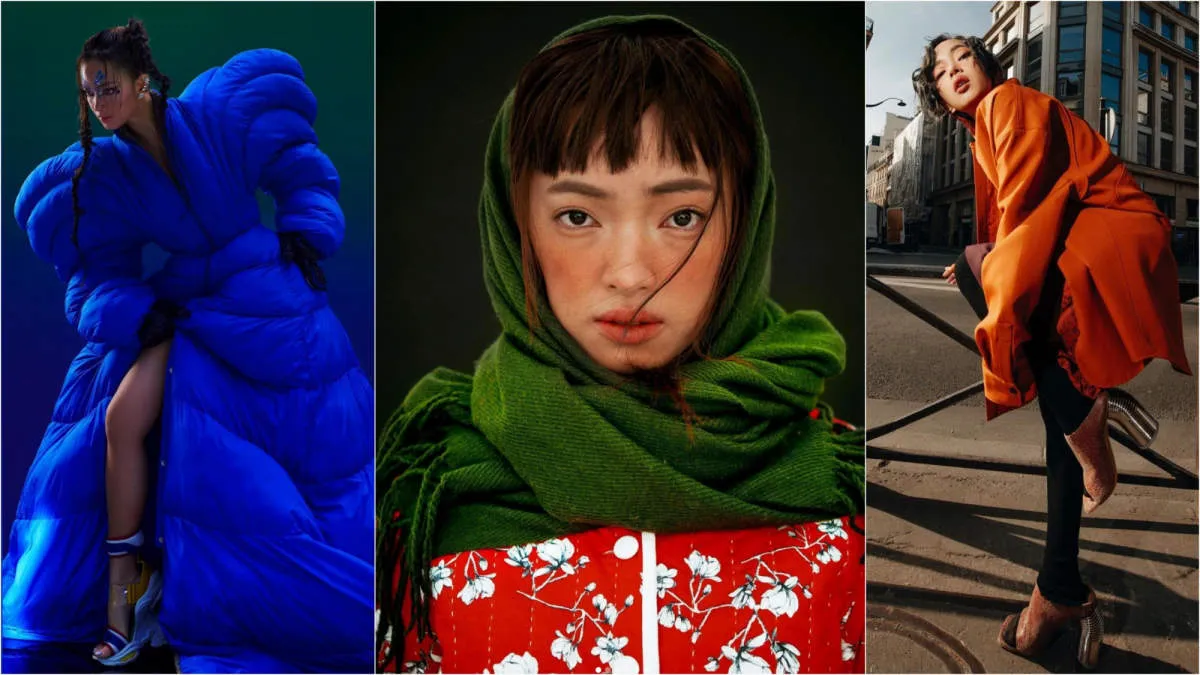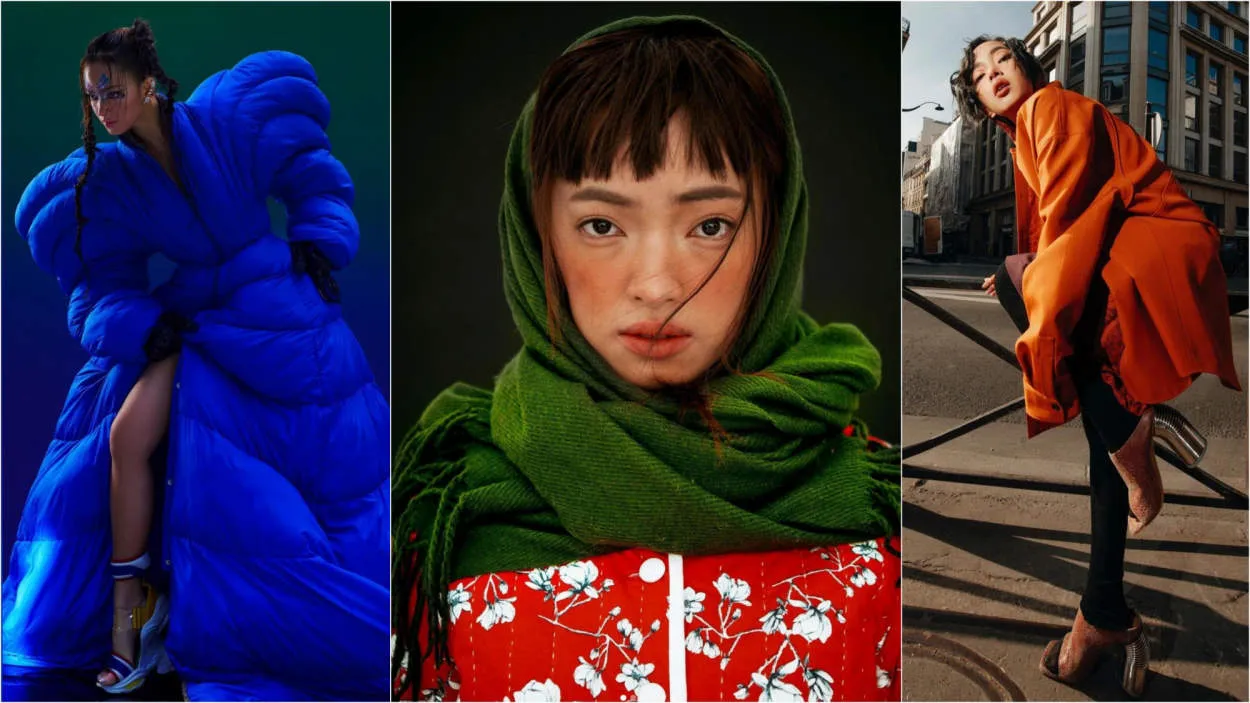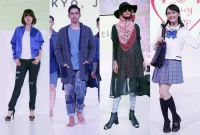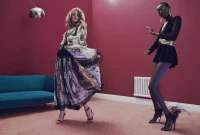In the ever-evolving world of fashion, breaking the mold is essential to staying ahead. Explore the realm of innovative and unconventional fashion trends that challenge traditional norms and redefine the notion of style.
Exploring Avant-Garde Fashion

Avant-garde fashion is a realm in the fashion industry where designers push boundaries and challenge the norms. It embraces innovation, nonconformity, and artistic expression, breaking away from traditional fashion trends. Avant-garde fashion seeks to revolutionize the way we perceive clothing and offers a fresh perspective on style.
In this article, we will delve into the world of avant-garde fashion and explore its unconventional trends that have captivated the fashion industry and beyond. From edgy silhouettes to bold color palettes and unexpected fabric combinations, avant-garde fashion allows designers to unleash their creativity and experiment with concepts that push the limits of what is considered wearable.
Edgy Silhouettes
Avant-garde fashion often features unique and exaggerated silhouettes that challenge conventional ideas of garment structure. Designers may craft garments with asymmetrical cuts, unusual draping techniques, or voluminous shapes that transform the human form into something abstract. These bold silhouettes create a visual impact and challenge the boundaries of traditional clothing design.
Unconventional Materials
Avant-garde fashion embraces the use of unconventional materials to create unexpected textures and visual effects. From recycled materials to industrial materials such as metal, rubber, and plastic, designers experiment with a wide range of fabrics to create garments that are truly one-of-a-kind. This emphasis on material innovation adds an extra layer of creativity and uniqueness to avant-garde fashion.
Experimental Color Palettes
Avant-garde fashion often features unconventional color palettes that deviate from the traditional norms of color coordination. Designers are not afraid to combine clashing hues or use bold, vibrant shades that demand attention. This daring approach to color creates visually striking outfits that challenge our perceptions and invite us to embrace new possibilities.
Avant-garde fashion is a powerful tool for self-expression and a means to challenge societal norms. It sparks conversation, encourages individuality, and pushes the boundaries of what is considered fashion. By exploring the world of avant-garde fashion, we open ourselves up to a world of endless creativity and innovation that will continue to inspire and influence the future of fashion.
Sustainable Practices in Innovative Design
In recent years, the fashion industry has witnessed a wave of innovative and unconventional fashion trends that break the mold of traditional design. However, with this newfound creativity, the importance of sustainable practices in the fashion industry should not be overlooked. Implementing sustainable practices is crucial to ensure the long-term well-being of our planet and to minimize the negative impacts of the fashion industry on the environment.
1. Ethical Material Sourcing
One key sustainable practice in fashion design is the ethical sourcing of materials. Designers should prioritize using eco-friendly and organic fabrics, such as bamboo, hemp, or recycled materials. This reduces the reliance on non-renewable resources and minimizes the environmental footprint of clothing production.
2. Zero-Waste Design
Zero-waste design is gaining popularity among innovative fashion designers. This approach aims to eliminate textile waste throughout the production process by utilizing every piece of fabric, thus reducing the amount of discarded material. By implementing zero-waste techniques, fashion designers can contribute to a more sustainable fashion industry.
3. Upcycling and Circular Design
Another sustainable practice is the concept of upcycling and circular design. Instead of disposing of unwanted or unused clothing, designers can transform them into new and improved garments. By embracing the circular economy model, fashion designers can reduce waste, conserve resources, and extend the lifespan of clothing, all while embracing innovative design.
4. Fair Trade and Ethical Production
Sustainable fashion goes beyond just materials and design; it also encompasses fair trade and ethical production practices. Fashion designers should ensure that their supply chains prioritize fair wages, safe working conditions, and the overall well-being of workers. By supporting ethical production, designers can contribute to a more sustainable and socially responsible fashion industry.
5. Collaboration and Innovation
Sustainable practices in fashion design can be further enhanced through collaboration and innovation. By sharing knowledge, resources, and expertise, designers can collectively strive for more sustainable solutions and push the boundaries of innovative design. Collaborative projects and research initiatives can lead to groundbreaking advancements in sustainable fashion.
Fashion That Defies Gender Norms
The world of fashion has always been a platform for self-expression and pushing boundaries. In recent years, there has been a growing movement to challenge traditional gender norms within the industry. Designers, brands, and individuals are breaking the mold and embracing innovative and unconventional fashion trends that defy the limitations of gender.
One significant trend is gender-neutral fashion, also known as gender-fluid or unisex clothing. This style blurs the lines between traditionally “masculine” and “feminine” fashion, creating a more inclusive and diverse approach to personal style. Gender-neutral clothing often features relaxed silhouettes, minimalist designs, and neutral color palettes, allowing individuals to express themselves without being confined by predefined gender expectations.
Another exciting development is the rise of gender-fluid runway shows. Fashion weeks around the world have witnessed designers showcasing collections that challenge traditional gender stereotypes. Models of all genders walk the runway, wearing garments that push the boundaries of what is deemed appropriate for their assigned gender. This shift in the industry not only challenges societal norms but also encourages a broader acceptance and celebration of individual identities.
The emergence of androgynous fashion has also played a significant role in defying gender norms. Androgyny refers to a style that blends elements from both masculine and feminine aesthetics, creating a unique and non-binary look. Celebrities and influencers have been instrumental in popularizing androgynous fashion, inspiring others to experiment and embrace their own individuality.
Furthermore, the fashion industry has seen an increase in gender-neutral and non-binary clothing lines. These labels primarily focus on creating garments that are not restricted by conventional gender norms. By offering a wide range of options, these brands provide individuals with the freedom to express themselves authentically. They strive to create a world where fashion is no longer limited by societal labels, allowing everyone to explore their personal style without boundaries.
In conclusion, the fashion industry is undergoing a significant transformation. The rise of fashion that defies gender norms opens up opportunities for self-expression and challenges societal expectations. With gender-neutral fashion, gender-fluid runway shows, and the popularity of androgynous style, individuals now have the freedom to embrace their unique identities without being restricted by traditional gender norms. This progressive movement in fashion signifies a step towards a more inclusive and diverse future.
The Art of Experimental Textiles
Breaking the Mold: Innovative and Unconventional Fashion Trends
Exploring the boundaries of fashion, designers are constantly pushing the envelope to create garments that challenge conventional norms. One such area where experimentation is taking center stage is in the realm of textiles.
Using a mix of traditional and unconventional materials, designers are creating unique and groundbreaking textiles that are revolutionizing the fashion industry. These experimental textiles not only capture the imagination of fashion enthusiasts but also pave the way for new possibilities in design.
From recycled plastic to 3D-printed fabrics, designers are embracing sustainability and technology to create fabrics that are not only visually striking but also environmentally-friendly. This trend of repurposing and reimagining materials brings forth a new era of conscious fashion.
Additionally, texture plays a vital role in experimental textiles. Designers are incorporating different elements, such as metallic threads, feathers, and unconventional fabrics, to create visually dynamic and tactile textiles. This interplay between texture, color, and form adds depth and dimension to garments, creating a truly immersive fashion experience.
The art of experimental textiles also extends to the art of storytelling. Many designers are using textiles to convey powerful messages and emotions, giving a voice to social and cultural issues. By intertwining creativity with activism, fashion becomes a platform for meaningful dialogue and expression.
The world of experimental textiles opens up a realm of endless possibilities for the future of fashion. As designers continue to break boundaries and challenge norms, we can expect to see even more innovative and unconventional fashion trends emerge, captivating the world with their boldness and ingenuity.
Embracing Individuality in Style
Fashion trends have long been influenced by societal norms and standardized ideals of beauty. However, in recent years, a refreshing shift has taken place in the fashion industry – the embrace of individuality in style. Breaking free from traditional molds, innovative and unconventional fashion trends have emerged, allowing individuals to express their unique personalities and celebrate their differences.
One notable trend that has gained popularity is gender-neutral fashion. The boundaries between masculinity and femininity are becoming blurred, with garments designed to be worn by anyone regardless of their gender identity. This inclusive approach to fashion not only challenges societal norms but also encourages self-expression and personal freedom.
Another way individuals are breaking the mold is through sustainable fashion choices. With growing awareness of the environmental impact of fast fashion, people are opting for eco-friendly alternatives. Vintage clothing, upcycled garments, and ethically sourced materials are just a few examples of how fashion can be innovative and environmentally conscious. By embracing these choices, individuals can make a statement about their values and contribute to a more sustainable future.
Furthermore, embracing individuality in style means celebrating diversity in body types. The fashion industry has started to embrace different body shapes and sizes, offering a wider range of options that cater to various body types. This shift promotes body positivity and encourages individuals to embrace their unique features, rather than conforming to unrealistic beauty standards.
In conclusion, the fashion industry is evolving, and innovative and unconventional fashion trends are revolutionizing the way we express ourselves through clothing. By embracing individuality in style, we can break free from societal constraints, celebrate diversity, and create a more inclusive and expressive fashion culture. So go ahead, break the mold, and let your style be the reflection of your true self.
The Future of Fashion Innovation
The fashion industry is constantly evolving, and with each passing year, we see new and innovative trends taking the runway by storm. These trends not only push the boundaries of conventional fashion but also pave the way for a more sustainable and inclusive industry.
1. Sustainable Materials
As environmental concerns continue to rise, the future of fashion lies in the use of sustainable materials. Designers are now experimenting with fabrics made from recycled plastic bottles, organic cotton, and even innovative materials like mushroom leather. This shift towards eco-friendly fashion not only reduces waste but also raises awareness about the importance of responsible manufacturing.
2. Technology Integration
Technology has become an integral part of our lives, and it is now making its presence felt in the fashion world. From 3D printing to wearable tech, designers are exploring ways to incorporate technology into their creations. Smart fabrics, for example, can monitor body temperature and adjust accordingly, providing both comfort and style.
3. Inclusivity and Diversity
The fashion industry has long been criticized for its lack of inclusivity and diversity. However, the future of fashion is focused on breaking these barriers and embracing individuals of all shapes, sizes, and backgrounds. Fashion brands are now showcasing diverse models on the runway, promoting body positivity, and offering inclusive sizing options. This shift towards inclusivity not only celebrates diversity but also appeals to a wider customer base.
4. Digitalization of Fashion
The digital age has revolutionized the way we experience fashion. With e-commerce platforms and social media, consumers now have instant access to the latest trends and can directly interact with brands. Virtual fashion shows and augmented reality try-ons are becoming the new normal, allowing customers to visualize outfits without leaving their homes. This digitalization of fashion is making the industry more accessible and interactive.
5. Circular Fashion Economy
The future of fashion lies in the transition from a linear to a circular economy. Instead of the traditional “take-make-dispose” model, designers are now focused on creating products that are durable, repairable, and recyclable. This shift towards a circular fashion economy aims to minimize waste and maximize the lifespan of clothing.
As we look to the future, it is clear that the fashion industry is evolving in exciting and unconventional ways. From sustainable materials to technology integration, inclusivity, digitalization, and the circular fashion economy, innovation is shaping the future of fashion. With each new trend, the industry breaks free from molds and embraces a more creative and responsible approach.
Conclusion
Breaking the Mold: Innovative and Unconventional Fashion Trends have revolutionized the way we perceive style. From avant-garde designs to sustainable fashion, these groundbreaking trends have continuously pushed the boundaries of creativity and self-expression.



